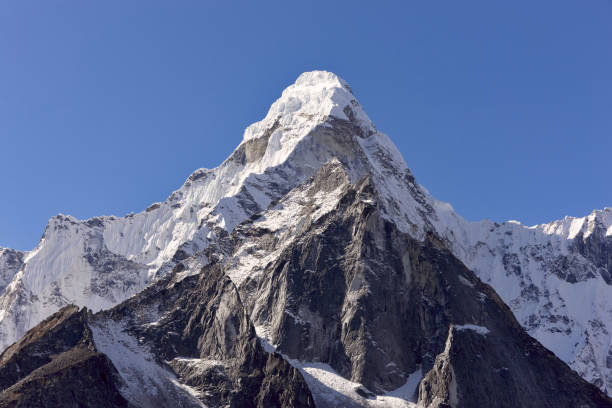Lhotse: The World's Fourth Highest Mountain and Its Fascinating History
Lhotse is one of the most impressive peaks in the world, standing at a staggering height of 8,516 meters (27,940 feet). Located in the Himalayas on the border between Nepal and Tibet, Lhotse is the fourth highest mountain in the world after Mount Everest, K2, and Kangchenjunga. It is an impressive peak with a fascinating history, making it a popular destination for mountain climbers and adventure enthusiasts from around the world.
The name Lhotse is derived from the Tibetan word "Lho-tse," which means "South Peak." The mountain is actually part of the Everest massif and shares its base camp. The first recorded attempt to climb Lhotse was made by an international team in 1955, but they were unsuccessful in reaching the summit.
It wasn't until 1956 that a Swiss expedition led by Fritz Luchsinger and Ernst Reiss finally conquered Lhotse's peak. The climbers had to endure incredibly difficult conditions, including severe weather and treacherous terrain, but they persevered and made it to the top.
Since then, Lhotse has been climbed by many other mountaineers, including several notable ascents. In 1984, Reinhold Messner and Hans Kammerlander became the first climbers to ascend both Lhotse and Mount Everest without returning to base camp. In 2001, Slovenian climber Tomaž Humar soloed the South Face of Lhotse, one of the most challenging climbs in the world.
Despite its impressive history and popularity among climbers, Lhotse is still a dangerous mountain to attempt. Many climbers have lost their lives while trying to reach its summit, and it remains a challenge for even the most experienced mountaineers. The mountain is also at risk due to climate change, with melting glaciers and changing weather patterns threatening the fragile ecosystem of the Himalayas.
Despite these challenges, Lhotse remains an iconic peak and a testament to human endurance and determination. Its towering presence and breathtaking beauty continue to inspire adventurers and outdoor enthusiasts around the world. Whether you're a seasoned climber or simply a lover of nature, Lhotse is a mountain that is sure to leave a lasting impression.
Lhotse's impressive height and location make it a popular destination for climbers and trekkers. Its proximity to Mount Everest and other nearby peaks makes it a part of many trekking routes and expeditions in the region. Climbing Lhotse requires a high level of physical fitness, technical climbing skills, and a great deal of experience, making it a challenging yet rewarding endeavor.
The mountain has several routes to the summit, including the classic South Col route, which is the most commonly used and the easiest. The South Face of Lhotse is considered one of the most challenging climbs in the world and has only been successfully ascended a few times. The West Face and Lhotse Shar are also popular routes, with varying degrees of difficulty.
In addition to its mountaineering history, Lhotse is also home to a diverse range of flora and fauna, including rare species such as the snow leopard and Himalayan black bear. The region is also home to several ethnic communities, including the Sherpa people, who have a rich cultural heritage and a long history of mountaineering.
Lhotse's location in the Himalayas also makes it an important part of the region's geography and ecology. The mountain is part of the Sagarmatha National Park, which is a UNESCO World Heritage Site and home to several important ecosystems, including alpine meadows, glaciers, and high-altitude forests. The park is also home to several sacred sites and cultural landmarks, including the Tengboche Monastery.
The mountain and its surroundings are also at risk due to the impacts of climate change. Rising temperatures and changing weather patterns are leading to melting glaciers and unstable conditions, making climbing and trekking in the region more dangerous than ever before. The region is also vulnerable to natural disasters, including landslides and avalanches, which can have devastating effects on local communities and ecosystems.
Despite these challenges, Lhotse remains an iconic symbol of the Himalayas and a source of inspiration for adventurers and nature lovers around the world. Whether you're a seasoned climber or simply a lover of the outdoors, Lhotse is a mountain that is
=====================================================================
Keywords = Lhotse, fourth highest mountain, history, exploration, legendary climbs, triumphs


Comments
Post a Comment